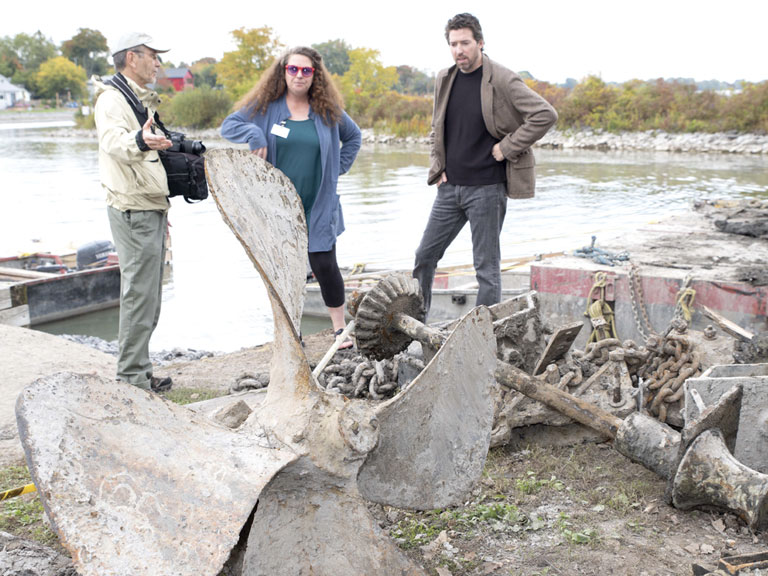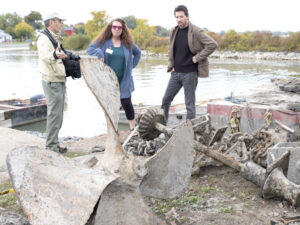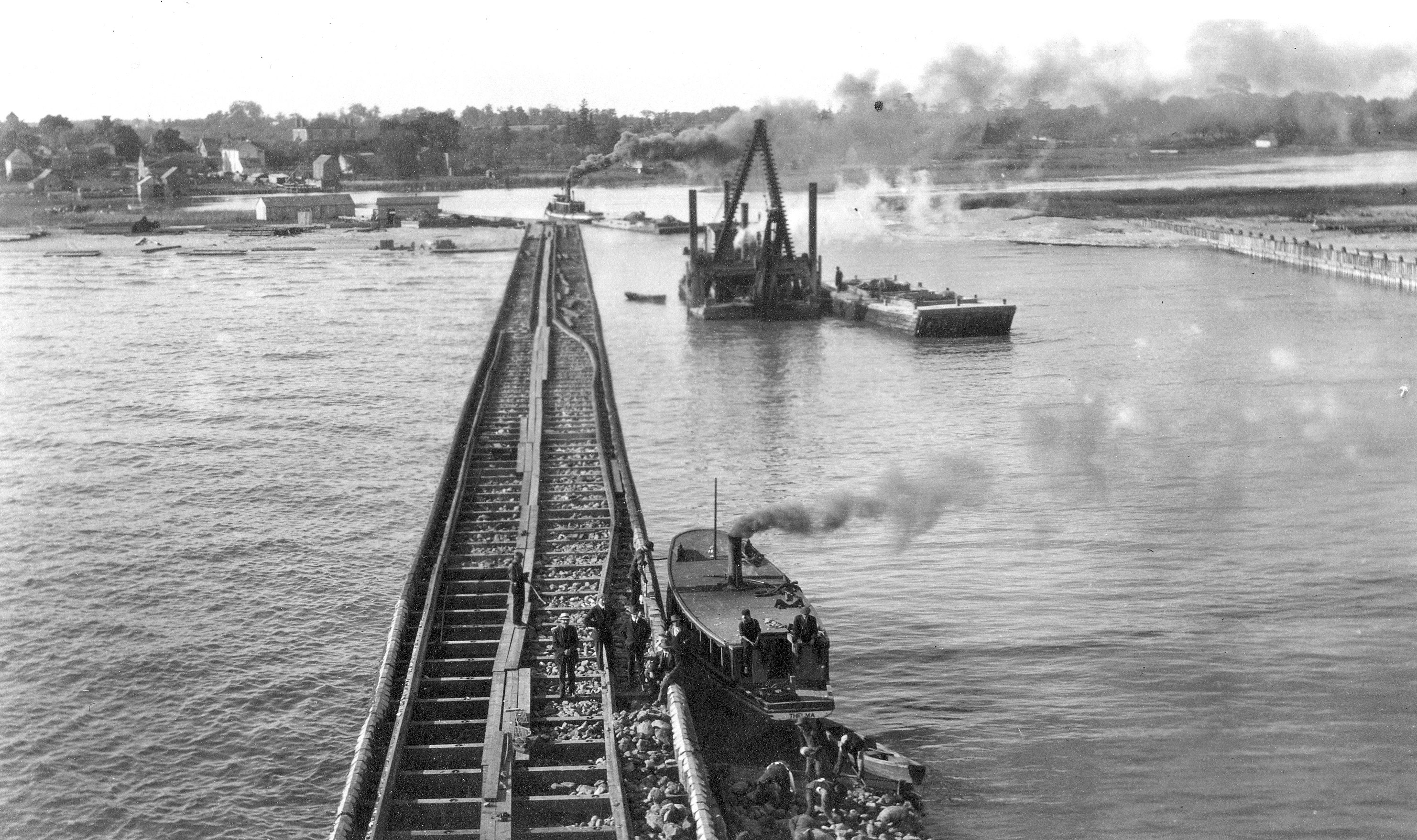County News
Treasures from the mud

Several unique items recovered during harbour salvage
Over the past two weeks, a salvage operation has been in progress to remove the abandoned vessels in West Lake at Wellington Harbour. For many decades, these hulks have lain in the water, sometimes completely submerged or partially exposed as lake levels fluctuated. Over the years, there have been complaints to Transport Canada that these sunken vessels constitute a hazard to navigation, and under the Wrecked, Abandoned, Hazardous Vessels Act Transport Canada hired a contractor to remove the vessels. There is no public comment requirement in the Act, but Transport Canada may consult with stakeholders, and the Minister may also publish a Notice of Intention to dispose of a vessel. Given that no known owner of these vessels had been identified, a Notice was not deemed necessary. Instead, the contractors performing the salvage were asked to contact the Mariners Park Museum should any artifacts be found that might be of cultural or heritage value.

(L-R): Historian Marc Seguin, Museums Collections Supervisor Liz Fennell and Museums Supervisor Chris Palmer examine some of the artifacts recovered during the salvage operation in Wellington.
There were five vessels submerged in the harbour: a steam dredge, a tugboat and three dump scows. The salvage operators suspect that these were part of the brickworks operation in Wellington in the early part of the 20th century, and were also used in the construction of the stone and wood-crib dock as well as dredging of the channel. They had likely outlived their usefulness after the brick factory closed down, and the owner simply parked them in a sheltered area, possibly with the intent of using them again. However, wooden vessels require a lot of maintenance, and coupled with the shift from steam power to the internal combustion engine, the vessels were simply abandoned. Everything of value was stripped from them, and eventually the winter ice sheared the tops away, leaving only the relics below the waterline. Much of the wood and metal had deteriorated over the decades, and has now been shipped away for disposal.
However, there were a number of pieces in salvageable condition that the contractors thought might be of interest to the museum. They set aside a large anchor as well as the steam-driven propeller from the tug that was in very good condition, despite spending a century in the mud. A steam-driven bilge pump was recovered from the mud. The nameplate on it is still readable, and so its origin can be traced. Surprisingly, one of the drain valves on the pump can still be opened and closed. A length of metal chain was also recovered. “It it was mild steel like we make today, it would have just turned to dust. I suspect a lot of this is wrought iron. Pig iron isn’t as tough, so they probably made the chain, the propeller and the anchor all out of wrought iron,” said Warren Fletcher of Scruton Marine. This is the oldest salvage operation his team has been involved in, and the most interesting. The propeller would have come from the tugboat, and local historian John Lyons thinks that it might have been the Maggie R. Mitchell, built in Welland. The vessels seem to have been constructed using a method slightly different from making traditional wooden boats, in this case using wood with reinforcing steel rods. The steam engine was missing from the tug, but it was likely a single-piston device. Much of the wood is beyond preservation, but they recovered a section of a “spud”, that was probably originally over 40 feet long. Several of these would have been driven into the lake bottom and then the scows would be chained to them for stability.
The recovered items will require heavy equipment to be moved to Mariners Museum for further conservation. The wooden spud section is about 20 inches square and 3 metres long, with some partial steel caldding, while the propeller and shaft are likely in excess of 500 kilograms. Museums supervisor Chris Palmer said that he would like to see a display in the park at Wellington Beach sometime in the future, where the items have a local connection. “For the museums, all the important things are generally the stories that are connected to the artifacts, so if there are some local connections those are things we want to keep in the community,” he said. “There are some pieces involve in this that we’d like to hang on to to tell some of the stories of Wellington Harbour and the work that was done here.” Collections supervisor Liz Fennell said the mechanical bits and pieces tell the wider story of the industrial connections, but she likes the more personal stories. One of the items that piqued her interest was a leather boot that was recovered. It is now sitting in a bucket of water to prevent it from drying out. “Machinery, to me, doesn’t hold the same ability to tell a story on an intimate scale level. A boot is worn by a person, one person. So if we were to find out whose boot that was, that would be a really personal connection, and it’s also more relatable to everyone, because everyone wears shoes and that’s something we all have in common,” she said.

This photo from the County archives shows a dredging barge as well as workers filling the long docks with stone in Wellington channel. If you look closely, you can see Tara Hall in the distance.

Where do the birds perch now?